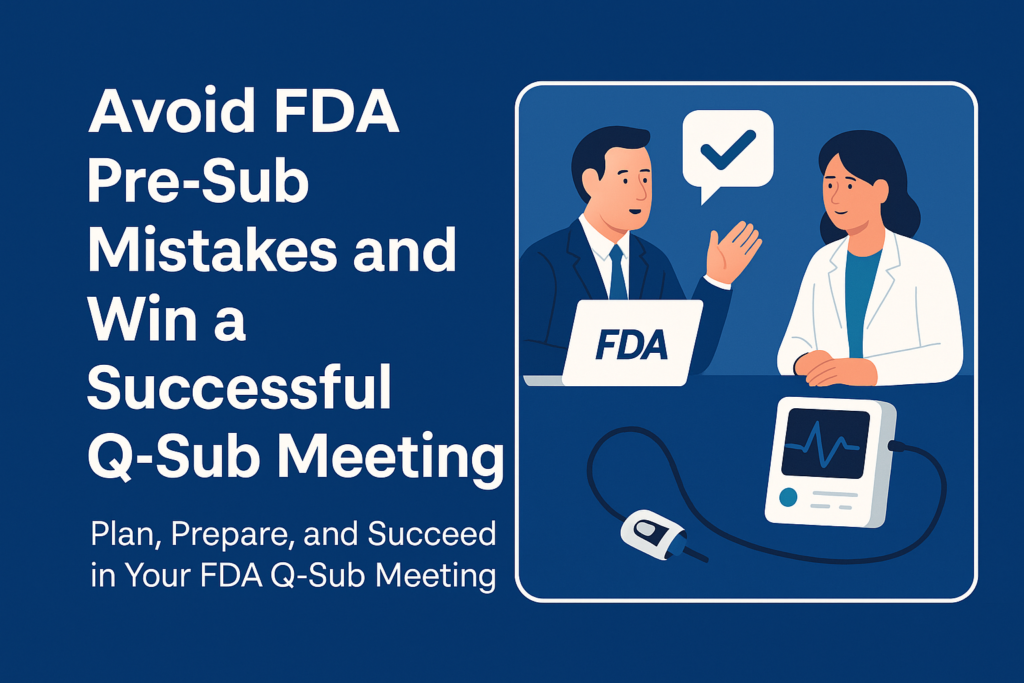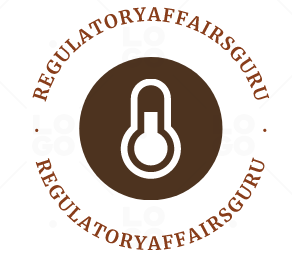
FDA Pre-Submission (Q-Sub) Get the Answers You Need Before Submission
???? What is the FDA Q-Submission (Q-Sub) Program?
The FDA Q-Sub Program is a formal procedure through which medical device firms can get early, organized FDA feedback before submitting a 510(k), De Novo, PMA, or other submissions.
Key facts:
✅ It is a voluntary, complimentary program.
✅ Allows you to ask regulatory, test, or clinical questions to de-risk your submission.
✅ Resolves uncertainties regarding:
Predicate selection
Regulatory pathway (510(k) vs. De Novo vs. PMA)
Testing requirements (biocompatibility, EMC, performance)
Clinical study designs
FDA feedback during a pre-sub is non-binding but highly predictive of how the FDA will review your submission, reducing surprises later.
When Should You Request a Pre-Sub?
You should request a pre-sub when:
✅ Your product is stable, and you know your indicated use and intended use.
✅ You have preliminary test data (bench or feasibility) and want feedback on your test plan.
✅ You need FDA feedback on:
What is the appropriate predicate device for a 510(k)?
Whether De Novo or PMA may be required.
You might need to adhere to specific controls or test specifications.
The proposed clinical study protocols should be evaluated for their safety and effectiveness.
Best time to ask:
Usually, you should inquire 6–12 months before the submission.
Avoid asking too early, as this may only yield general information about the device.
Do not ask too late (after testing is complete, with no time to make changes through feedback).
Step-by-Step: Preparing for a Successful Pre-Sub
1️⃣ Get Internal Strategy Aligned
Before preparing the Pre-Sub:
✅ Get aligned on RA/QA, R&D, clinical, and management on:
Why the Pre-Sub is required.
What do you want to get as feedback from the FDA?
Who will be attending and presenting at the Meeting?
✅ Specify:
Indicate the specific regulatory strategy assumptions that require validation.
Decide if you prefer written-only feedback or feedback combined with a teleconference, which is advised for complex devices.
2️⃣ Create a High-Quality Pre-Sub Package
The FDA demands an organized, well-written pre-sub document. It must include:
✅ Cover Letter
The title should be “Pre-Submission Request under Q-Submission Program.”
The cover letter should include the name of the device, the type of submission, and a summary of the request.
✅ Device Description
The device description should provide a detailed and concise explanation of the device’s function, components, and usage.
The description may include photos or diagrams to enhance clarity.
✅ Regulatory History
The regulatory history should include previous Q-Subs or interactions with the FDA.
Please refer to the previous 510(k), PMA, or De Novo history as necessary.
✅ Proposed Regulatory Strategy
The planned submission type is either 510(k), De Novo, or PMA.
The product code and regulation number, if available, should be included.
The intended predicate device(s) should have 510(k) numbers or provide a rationale for De Novo.
✅ Specific Questions for FDA
Complete, actionable questions, i.e.:
Does the FDA agree with our planned predicate device?
Are our planned biocompatibility tests sufficient based on ISO 10993-1?
Is our planned clinical endpoint acceptable?
✅ Supporting Data
The supporting data includes preliminary summaries of bench tests.
The supporting data may include early risk analysis or usability information.
When applicable, include references to clinical plausibility or relevant literature.
✅ Proposed Meeting Logistics
Request a teleconference or in-person meeting.
Offer up preferred dates to meet (the FDA typically meets 60–75 days after they receive the pre-sub).
List and title your participants.
3️⃣ Submit Your Pre-Sub Package
✅ Submit as an FDA eCopy:
Single, bookmarked, hyperlinked PDF.
Include a Table of Contents for ease of access.
Use transparent file naming for attachments.
✅ Submit through the FDA CDRH Portal (preferred) or by mail.
✅ The FDA will acknowledge receipt of your submission and assign a Q-Number (e.g., Q250027) for tracking purposes.
4️⃣ FDA Review Process and Timeline
1️⃣ FDA Acknowledges Receipt
✅ Confirms your pre-sub and assigns a Q-number.
2️⃣ FDA Preliminary Review
✅ You may reach out if you have any questions requiring clarification.
3️⃣ FDA Gives Written Comments
✅ Received ~5 business days before the meeting.
✅ All submitted questions are addressed in written comments.
4️⃣ Pre-Sub Meeting
✅ Teleconferences typically last 60 minutes.
✅ Structure:
FDA introductions.
You deliver a brief device and objective summary (~5 min).
Discuss each question in response to the FDA’s written comments.
The FDA educates and makes non-binding decisions.
5️⃣ Meeting Minutes
✅ You prepare and distribute minutes with the FDA after the meeting.
✅ The FDA reviews the minutes and signs them to close the record.
???? Best Practices to Maximize Your Pre-Sub Value
✅ Ask Specific, Actionable Questions:
“Does the FDA agree that the proposed ISO 10993 endpoints for cytotoxicity, sensitization, and irritation are acceptable?”
Not, “Is our biocompatibility strategy okay?”
✅ Limit Questions to 5–8:
Please prioritize to ensure there is time for in-depth discussion during the meeting.
✅ Add Context and Rationale:
Please include testing methods, references to standards, and explanations for your approach.
✅ Make an Internal Slide Deck (Optional):
This guarantees that your team is in agreement and streamlines the conversation prior to the meeting.
✅ Have Internal Dry Runs:
Ensure your team is ready to present and ask follow-up questions concisely.
✅ Take Full Notes in the Meeting
Capture FDA comments, recommendations, and concerns.
✅ Follow Up Immediately After Meeting:
Please adjust your testing plans, design, and methodology in accordance with FDA feedback.
✅ Document Feedback in Your DHF:
You should be able to demonstrate compliance with FDA input in future audits.
???? Pre-Sub Limitations
❌ FDA feedback is non-binding: It guides your approach but does not guarantee clearance.
❌ Pre-subs are not for:
Pre-subs are not intended for legal issues such as patents and intellectual property.
The focus should be on business or reimbursement strategies.
❌ FDA will not make a final classification or clearance in Pre-Subs.
Benefits of an Effective Conducted Pre-Sub
✅ Save on costly, avoidable testing.
✅ Avoid rejections or delays in your 510(k)/De Novo review.
✅ Receive FDA feedback on regulatory strategy, test plans, and clinical design.
✅ Establish trust with FDA reviewers for ease of communication.
✅ Accelerate your device’s path to market.
Real-World Example
Case: A MedTech startup developing a wearable cardiac monitor used a pre-sub to:
✅ Check if a 510(k) vs. De Novo was appropriate.
✅ Address predicate device suitability.
✅ Ensure they have a test plan for ISO 81060-2 regarding blood pressure measurement.
✅ Get FDA feedback on intended clinical endpoints for precision.
Outcome: Cleared 510(k) with no AI cycles, saving about 4–6 months and avoiding unwanted testing expenditures.
